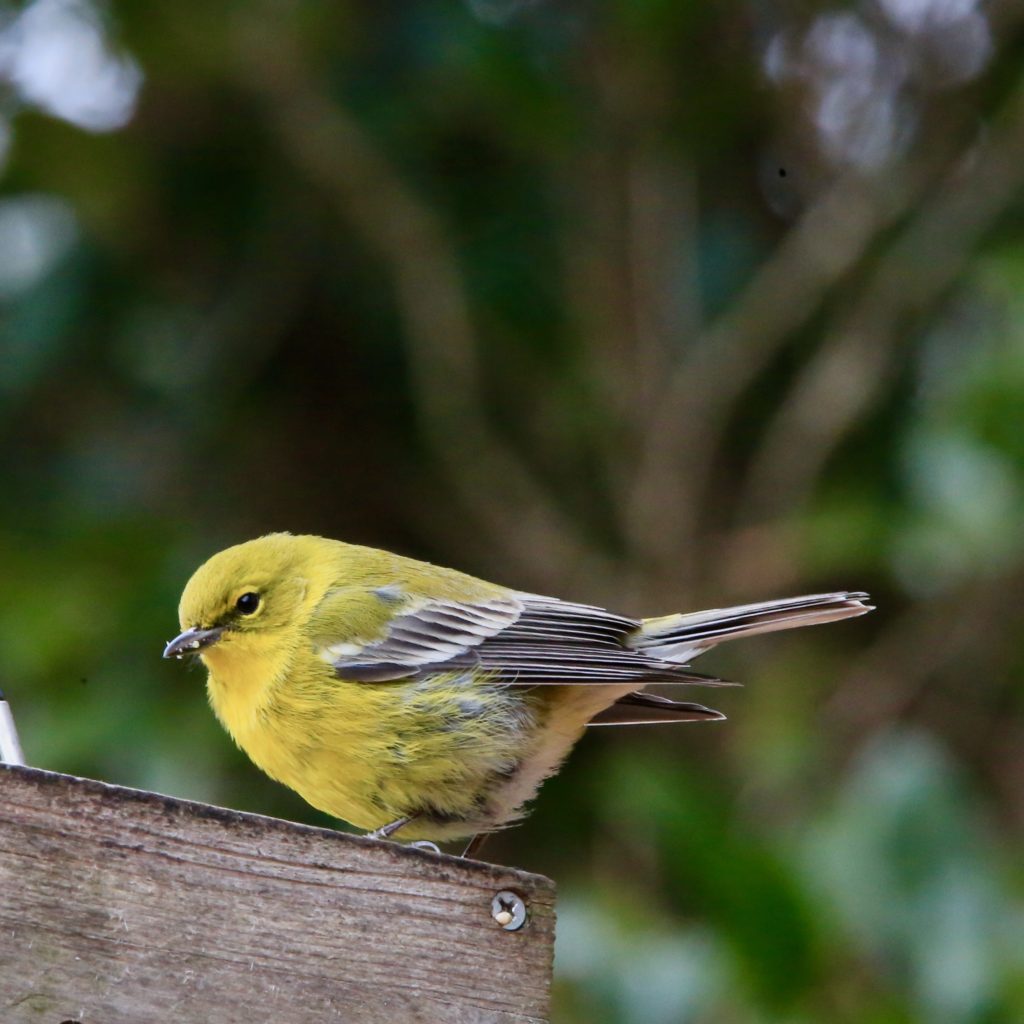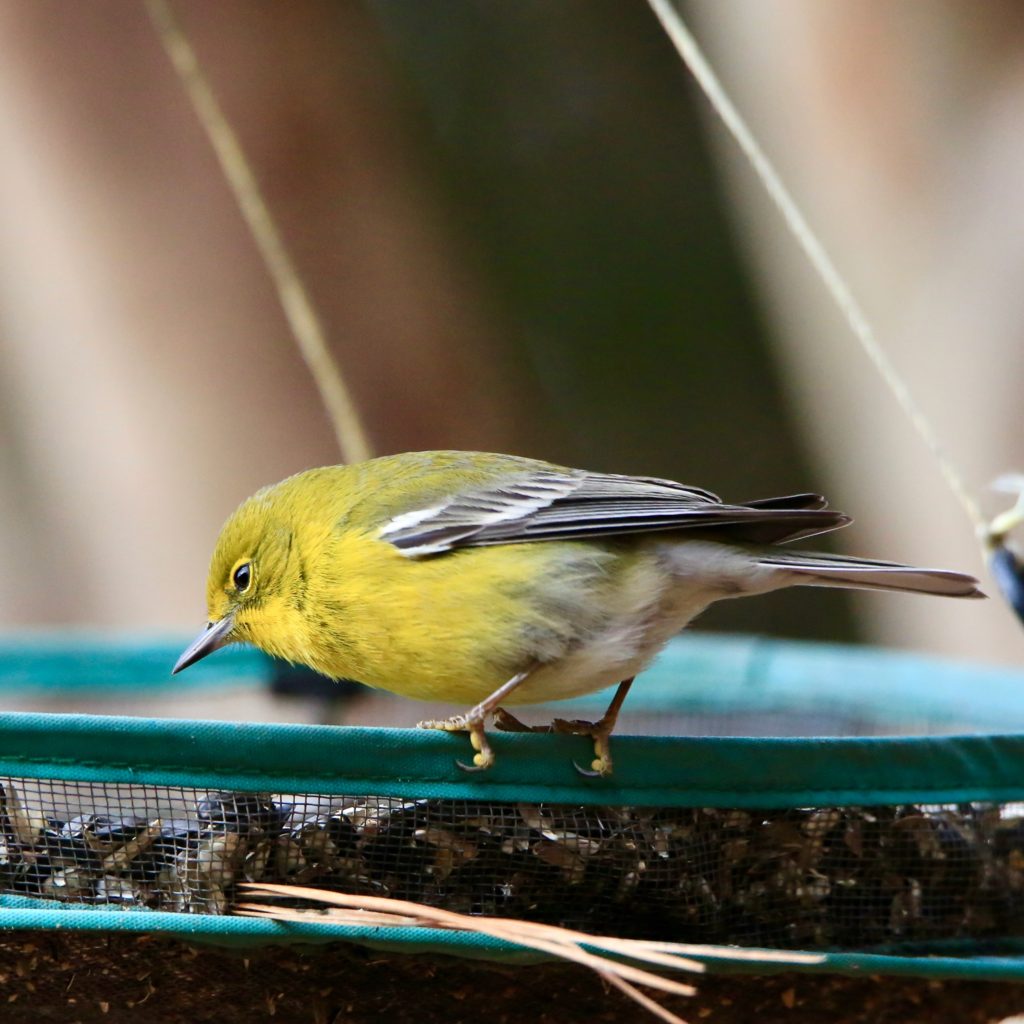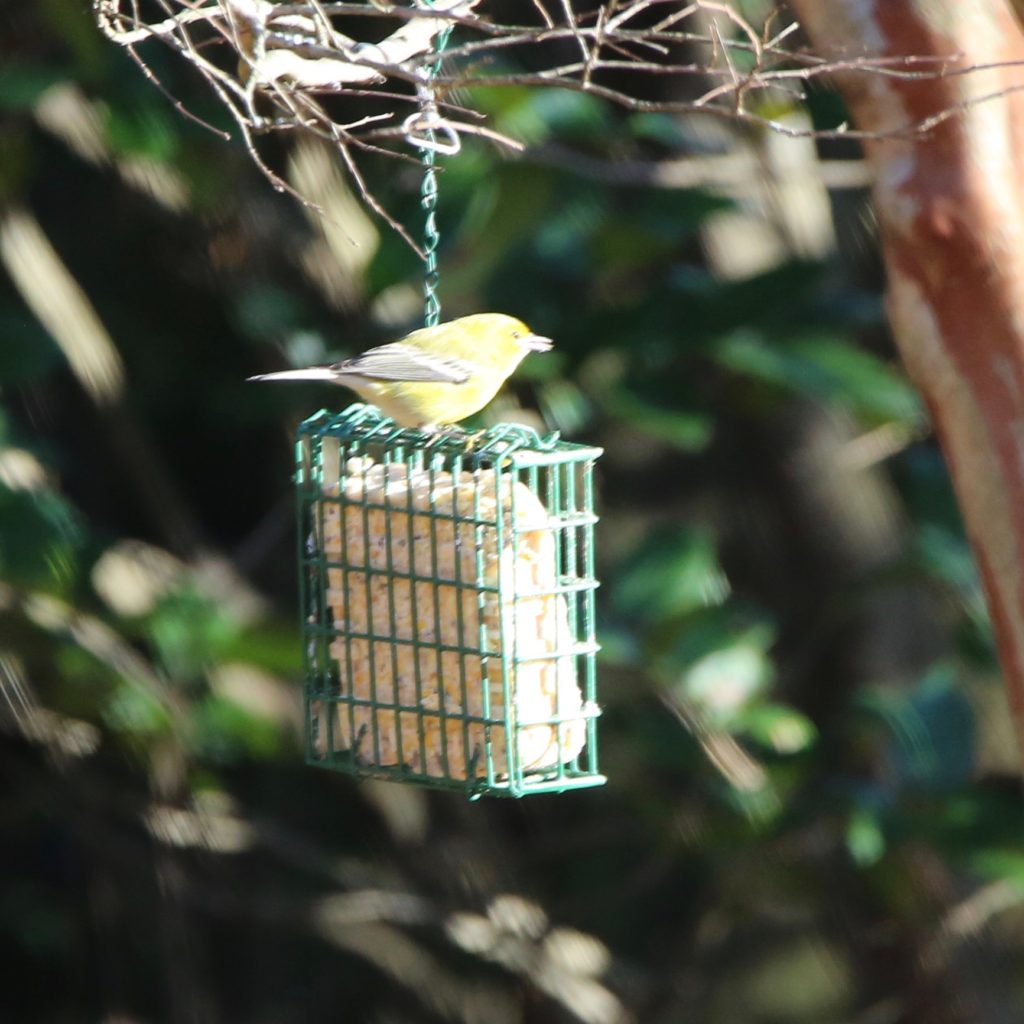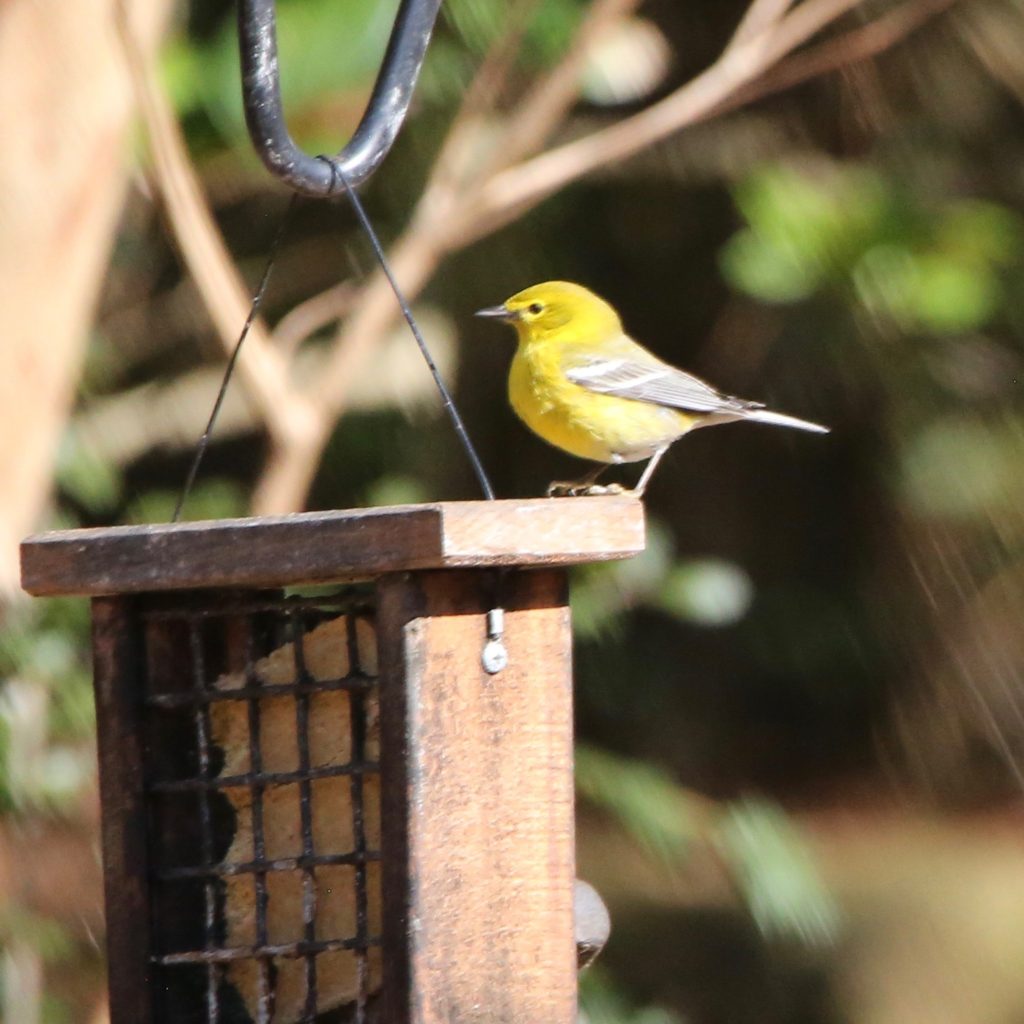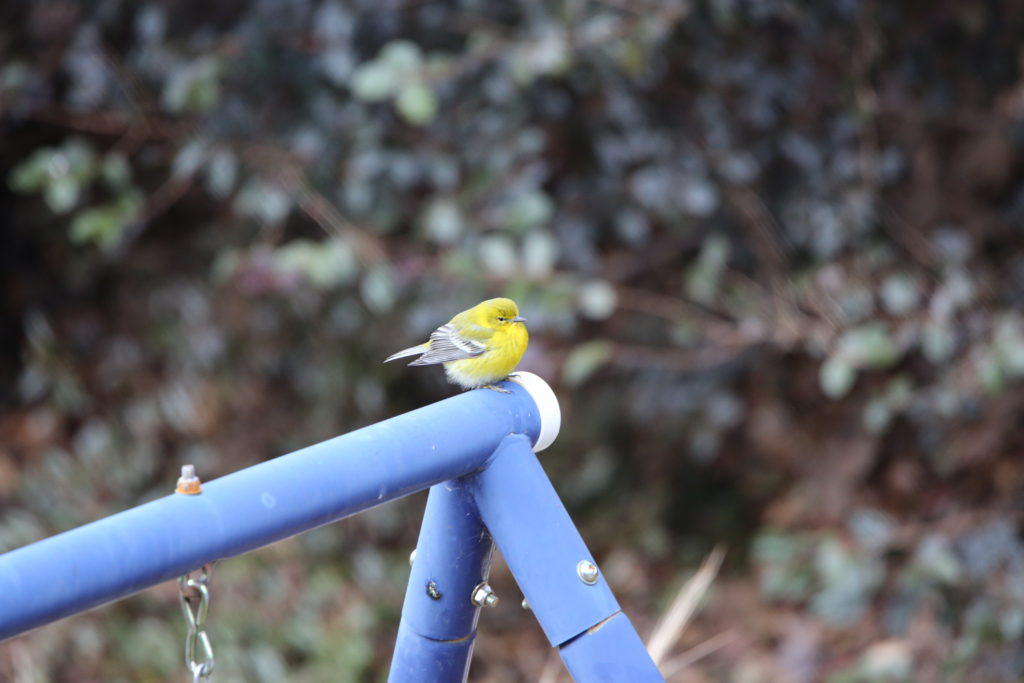
Pine Warbler
A Pine Warbler is a fun bird to see while bird watching. Below are some tips to help you identify Pine Warblers. We have also put together a list of fun Pine Warbler t-shirts, Pine Warbler bird patches, bird houses, bird feeders, binoculars, stickers and other fun bird watching items.
About Pine Warblers
The Pine Warbler (Setophaga Pinus) is a bright yellow songbird located in pine woods found in North America. Although they are permanent residents of Sothern Florida, some Pine Warblers migrate to the Caribbean Islands and North Eastern parts of Mexico.
Description and Identification
Pine Warblers can be identified through their stout bills, their physical size which is larger as compared to other species of Warblers, and their yellow and white plumage. The adult males have a yellow-olive back with yellow throats, white underbelly and under tail coverts along with dull olive-blackish streaks on the sides of the breasts. They also have indistinct broken yellow eye rings and supercilium. The adult female looks similar to the male with streaks on the sides of the breasts. What makes females distinguishable from males is their paler yellow colour. Juvenile Pine Warblers are several shades duller in color as compared to the adults. Adult Pine Warblers are on an average 5-5.75 inches in length and weigh around 0.42 oz.
Pine Warbler Color Pattern
Pine Warblers are distinct yellow birds with olive green backs with white bellies. Their wings are conspicuously whitish-gray in color.
When compared, the adult male Pine Warbler has a brighter yellow plumage more than the female and young Pine Warblers. They even sometimes appear as gray-brown in comparison to the adult male.
Pine Warbler Size
Pine Warblers are small active birds; plump, long-tailed birds with touted bills.
The relative size for both sexes is:
- Length: 5.1-5.5 in (13-14 cm)
- Weight: 0.3-0.5 oz (9-15 g)
- Wingspan: 7.5-9.1 in (19-23 cm)
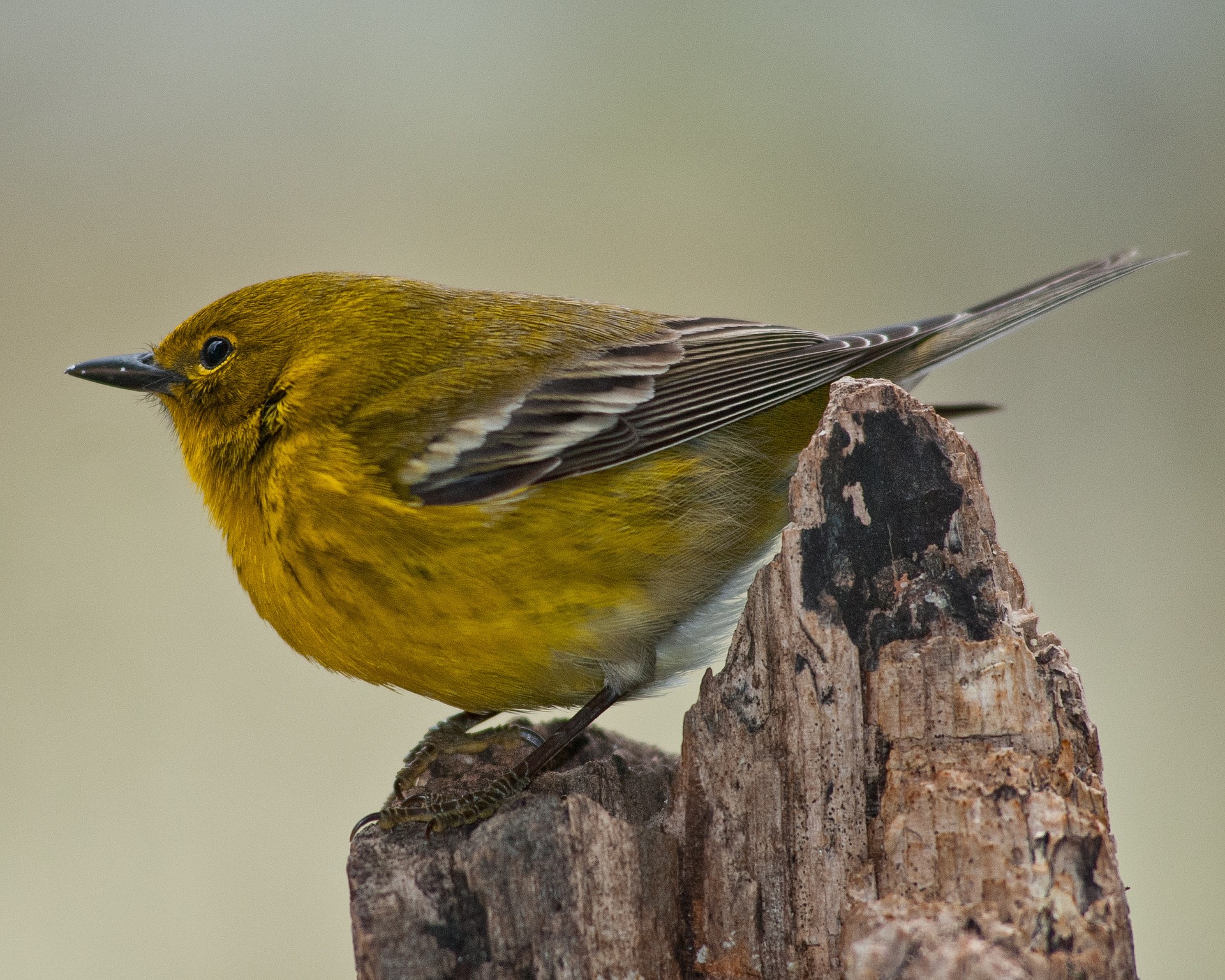
Pine Warbler Behavior
- They are usually more active during the day, seen hopping and climbing up tree trunks.
- Much like most warblers, their wings beat in an irregular pattern when they fly.
- During the summer and winter, some Pine Warblers migrate further South during the night.
- When their breeding season comes around, the Pine Warbler pair is usually most active at dawn.
What Pine Warbler Eat
Pine Warblers are known to forage for insects on tree trunks, in pinecones and walk around on
the ground doing the same. Their diet largely consists of insects and spiders, which include
insects such as grasshoppers, beetles, moths, caterpillars, etc. When insects are scarce, they
also feed on seeds, berries, and weeds. They are also known to visit backyard bird feeders to
feed on seeds. During winters in the south, they are also known to forage with Eastern
Bluebirds, looking for insects and seeds.
Insects, seeds, berries. Largely feeds on insects and spiders; diet includes grasshoppers, caterpillars, moths, beetles, ants, bugs, others. When few insects available, often eats seeds of pine, grass, and weeds, also some berries
Where Pine Warblers Live
True to their name, Pine Warblers reside in forests, in and around pine trees. They are also
known to reside in deciduous forests with pine trees around. Pine trees are especially preferred
by the species during nesting season. During the rest of the year, they might expand their
territory to mixed woodland edges, thickets, orchards, and in some cases even suburban
backyards.
Just like their name suggests, Pine Warblers live in pine trees found in either pine forests or in deciduous woods where pine trees are present. They also visit bird feeders and suburban backyards.
Range and Migration
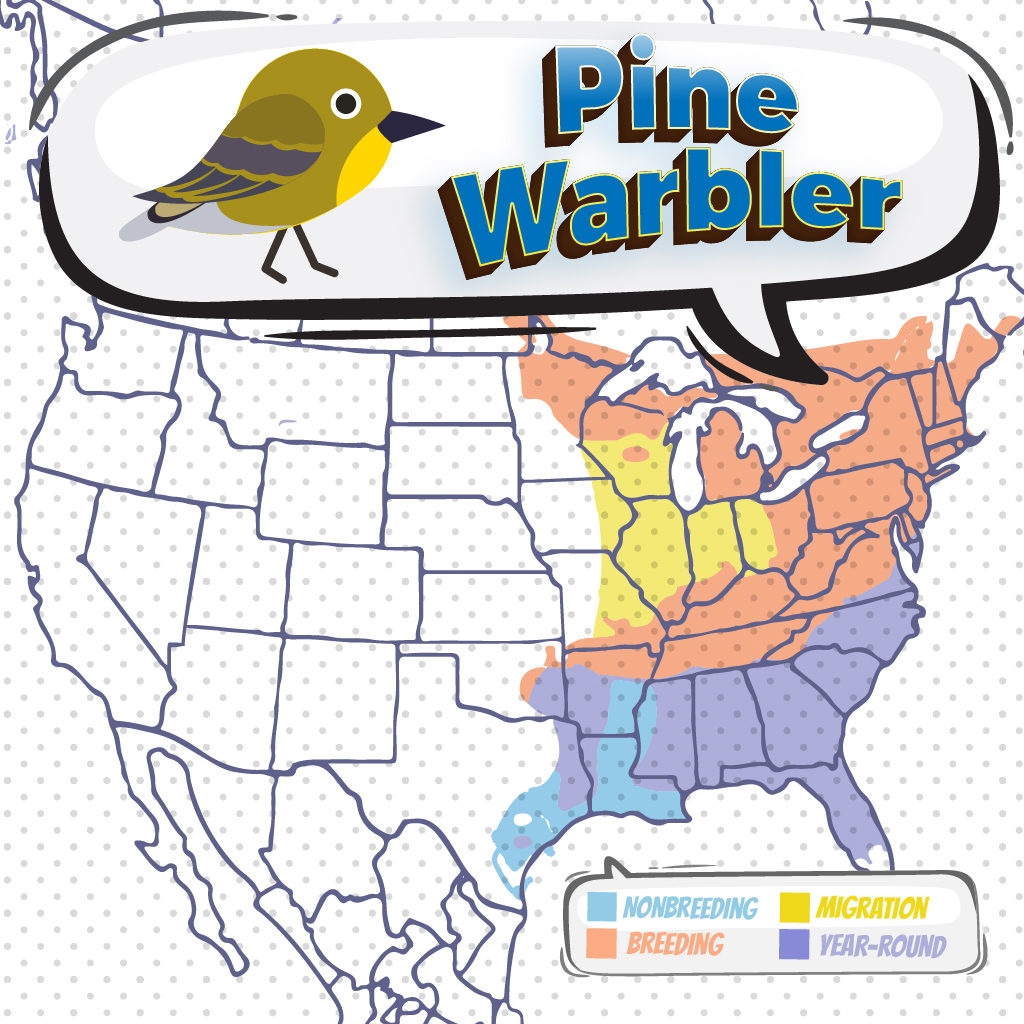
As the name suggests, Pine Warblers are mainly found in forests around pine trees. They
typically reside in the Eastern parts of North America and are year-round residents of the United
States. While the Northern populations are migratory, several Southern populations are known
to be sedentary. During the winter season, the migratory population files down to the South-
Eastern parts of the country, wintering in states such as Texas, Louisiana, Arkansas, and some
parts of Florida. During the nesting season they fly northwards to the states of Minnesota,
Wisconsin, Michigan, New York, along with states such as Missouri, Tennessee, North and
South Carolina, etc. They are also known to nest in the Southern parts of Canada. During
migration, Pine Warblers are known to fly in flocks with numbers reaching 50-100 birds at times.
Pine Warbler Lifecycle
During mating season, which is 1-3 times in a year, the male’s plumage becomes more bright in order to attract females. The female lays 3-5 whitish spherical eggs with olive-brown specks that she then goes to incubate for 12-14 days until they hatch.
Newly hatched Pine Warblers are ready to fly and fledge at just 10 days old.
Pine Warbler Nesting
Given the effect produced by their beautiful songs, it is not surprising to know that male Pine
Warblers sing to attract the females during the nesting season. The nests are built high above
the ground in pine trees. They are built of pine needles, stems, roots, twigs, etc. These nests
are built into neat structures. Female Pine warblers lay between 3-5 eggs, which are then
incubated by both parents for a period of 9-12 days. Co-parenting is observed even after the
nestlings are born as both members of the pair forage to feed the younglings. Pine Warblers
can brood up to two or three broods a year.
Ornithology
Bird Watching Academy & Camp Subscription Boxes
At Bird Watching Academy & Camp we help kids, youth, and adults get excited and involved in bird watching. We have several monthly subscription boxes that you can subscribe to. Our monthly subscription boxes help kids, youth, and adults learn about birds, bird watching, and bird conservation.
Bird Watching Binoculars for Identifying Pine Warblers
The most common types of bird watching binoculars for viewing Pine Warblers are 8×21 binoculars and 10×42 binoculars. Bird Watching Academy & Camp sells really nice 8×21 binoculars and 10×42 binoculars. You can view and purchase them here.
Pine Warbler T-shirts
If you love the Pine Warbler you should purchase a Bird Watching Academy & Camp T-shirt. To help support bird conservation we donate 10 percent to bird conservation activities.
Pine Warbler Iron On Patches
Kids, Youth, and Adults love to collect our Bird Watching Academy & Camp iron on patches. Our bird watching patches help you keep track of the birds you have seen an identified. You can also display the patches on our Bird Watching Academy & Camp banners.
The Pine Warbler is a great iron on patch to start your collection with. The patches are durable and can be sewn on or ironed on to just about anything.
Pine Warbler Stickers
Stickers are a great way for you to display your love for bird watching and the Pine Warbler. We sell a monthly subscription sticker pack. The sticker packs have 12 bird stickers. These sticker packs will help your kids learn new birds every month.
Bird Feeders For Pine Warbler
There are many types of bird feeders. Here are our favorite bird feeders for your backyard. We use all of these bird feeders currently. Kids will have a great time watching birds eat at these bird feeders. Using this collection of bird feeders will provide a wide variety and many types of birds.
Best Bird Houses for Pine Warbler
There are many types of bird houses. Building a bird house is always fun but can be frustrating. These 4 bird houses have become our favorites. Getting a bird house for kids to watch birds grow is always fun. We spent a little extra money on these bird houses but they have been worth the higher price and look great.


